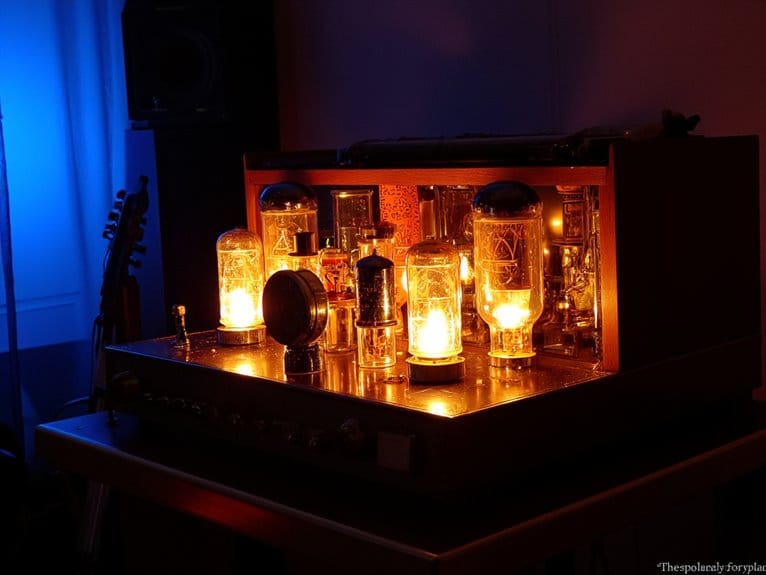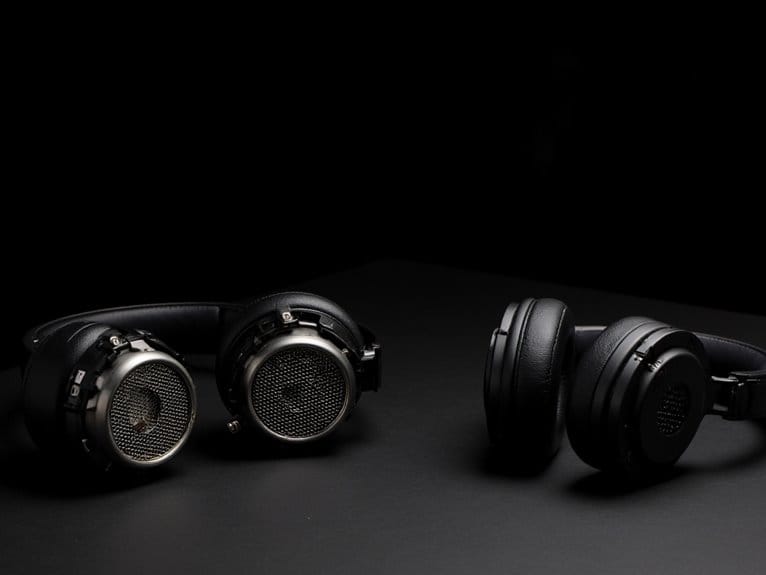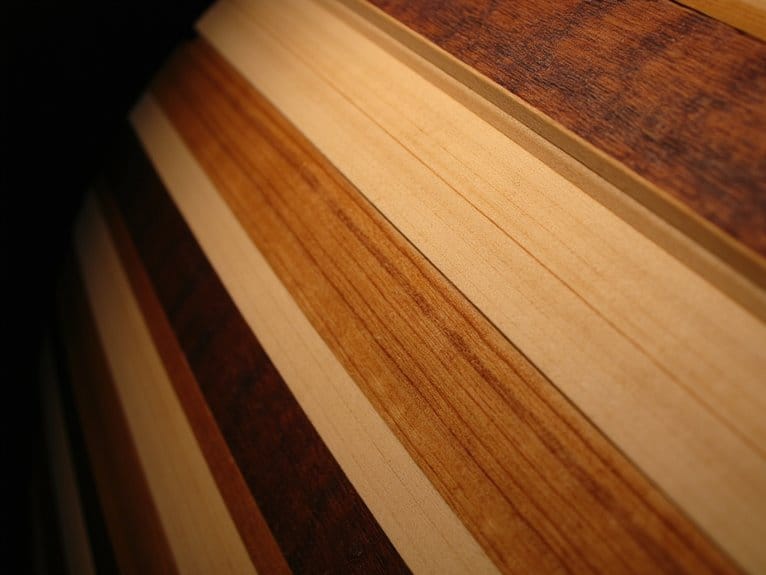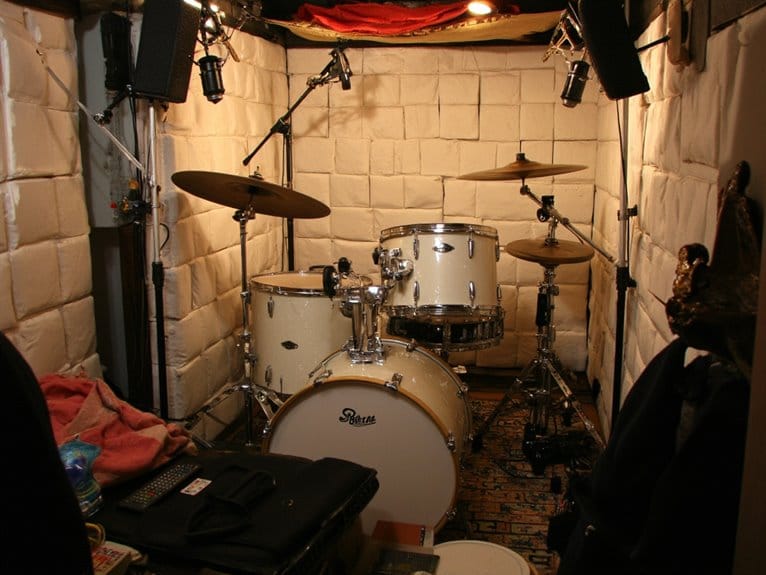Saturation… What Is It? Understanding Audio Coloration
Audio saturation is controlled distortion that adds harmonic richness to your recordings by mimicking analog hardware behavior. When you apply saturation, you’re creating additional harmonics through gentle compression and soft clipping, transforming sterile digital audio into warm, musical sounds. Tube saturation emphasizes even-order harmonics for warmth, while tape saturation adds odd-order harmonics with subtle compression. Unlike harsh distortion, saturation maintains your original tonal character while enhancing it through frequency spectrum expansion and natural dynamic control that makes tracks feel more cohesive and alive.
We are supported by our audience. When you purchase through links on our site, we may earn an affiliate commission, at no extra cost for you. Learn more.
Notable Insights
- Audio saturation is controlled distortion that creates additional harmonics, enriching the frequency spectrum and adding musical warmth to recordings.
- Tube saturation emphasizes even-order harmonics for warmth, while tape saturation creates odd-order harmonics with subtle compression and rounded transients.
- Saturation provides soft-knee compression that tames harsh transients while preserving musicality, unlike aggressive limiting that can sound unnatural.
- Unlike harsh distortion, saturation subtly enhances original tonal character while maintaining the audio’s fundamental identity and musical dynamics.
- Effective saturation requires moderation to add perceived loudness and analog warmth without sacrificing clarity or creating unwanted muddiness.
The Science Behind Audio Saturation and Harmonic Enhancement
When I first started exploring audio production, I’ll admit I was baffled by how engineers could make digital recordings sound so much warmer and more engaging than the clinical perfection straight from a computer.
The secret lies in saturation’s fundamental mechanism, where electrical or magnetic devices get pushed beyond their linear capacity, creating controlled distortion that clips waveform peaks and generates additional harmonics not present in the original signal.
This harmonic layering process enriches your audio through frequency modulation, with tube saturation favoring even-order harmonics for warmth, while tape saturation introduces odd-order harmonics with subtle compression.
The nonlinear transfer function fundamentally acts like a funhouse mirror on your waveforms, mathematically creating multiples of original frequencies that fill spectral gaps and add the tonal complexity that makes digital recordings feel more alive and dimensional. True saturation occurs when transformers reach their magnetization limit, preventing further magnetic enhancement and causing characteristic waveform distortion. Modern digital solutions emulate these analog saturation characteristics but require substantial processing power to accurately recreate the complex harmonic behaviors of vintage hardware.
Exploring Different Types of Saturation and Their Sonic Signatures
Now that you understand how saturation creates those additional harmonics that breathe life into sterile digital recordings, it’s worth exploring the distinct flavors each type brings to your mix.
Honestly, choosing the wrong saturation can turn your carefully crafted track into a muddy mess or an overly harsh sonic assault.
Tape warmth delivers odd-order harmonics with subtle compression, rounding transients beautifully, while tube harmonics focus on even-order enhancement that amplifies low frequencies with musical compression.
Transistor grit adds aggressive odd-order harmonics and harder clipping behavior, perfect for edgy textures.
Console glue provides that cohesive analog feel through summing nonlinearities, and digital flexibility offers precise algorithmic control over all these characteristics without hardware limitations. Just like guitar effects processors, saturation units often benefit from true bypass circuitry to maintain signal integrity when the effect is disengaged. Saturation also adds perceived loudness to your tracks while maintaining musical dynamics, making your mix feel fuller without sacrificing punch. The key to effective saturation lies in moderation and experimentation, as pushing these processors too hard can quickly diminish the punchiness and clarity you’re trying to achieve.
How Saturation Shapes Dynamic Range and Tonal Character
Beyond the harmonic content we’ve just explored, saturation’s real magic happens in how it fundamentally reshapes your audio’s dynamic behavior and tonal fingerprint, creating that elusive “analog warmth” through a sophisticated interplay of soft compression and frequency enhancement that I’ve found transforms even the most lifeless digital recordings into something with genuine character.
The dynamic control you’ll experience comes from saturation’s soft-knee compression, which gently tames transients while preserving musicality, unlike harsh limiting that can crush your mix’s soul. This transient softening creates slightly rounded attacks that deliver musical smoothness rather than the jarring peaks that can make digital audio feel mechanical and cold.
These saturation techniques simultaneously expand your frequency spectrum through harmonic generation, where even harmonics add warmth and odd harmonics contribute brightness, effectively making your tracks feel fuller, warmer, and markedly more present in the mix without aggressive level increases. By managing crest factor, you’ll maintain optimal balance between peak levels and the body of your sound, ensuring your audio maintains clarity while achieving the density necessary for competitive loudness.
Saturation vs. Distortion: Key Differences Every Producer Should Know
Why do so many producers struggle to distinguish between saturation and distortion when these two processing techniques create fundamentally different sonic results that can make or break your mix decisions? The confusion stems from their overlapping characteristics, yet understanding their distinctions will transform how you approach audio coloration in your productions.
Saturation techniques add warmth through gentle compression and lower-order harmonics, particularly second-order harmonics that create that coveted analog warmth without drastically altering your source material’s character.
Distortion effects, however, generate broader harmonic changes and more aggressive waveform clipping that fundamentally transforms your audio’s identity. This occurs because saturation combines harmonic generation and soft-knee compression when hardware components become overwhelmed.
The input-output ratio changes dramatically when signals exceed component capacity, creating the characteristic compression behavior that distinguishes saturation from pure distortion.
- Saturation enhances existing tonal characteristics while maintaining musical integrity
- Distortion creates deliberate sonic transformation for creative sound design purposes
- Saturation works subtly on low-frequency elements; distortion demands attention
On a final note
You’ve now got the tools to understand saturation’s role in your mixes, from subtle tube warmth that adds 2-3% THD to aggressive tape compression that sculpts transients. Whether you’re chasing analog character or digital precision, remember that saturation isn’t just distortion-it’s controlled harmonic enhancement that shapes frequency response, dynamic behavior, and tonal complexity. Start subtle, trust your ears, and let these coloration techniques serve your creative vision.






